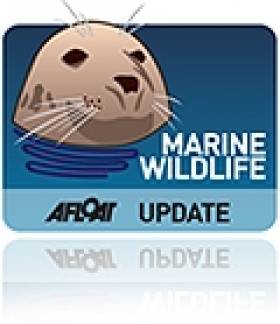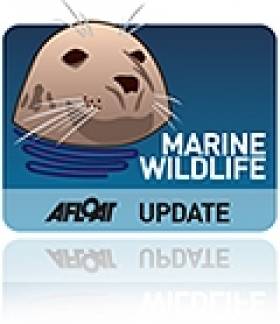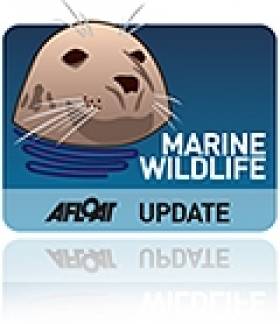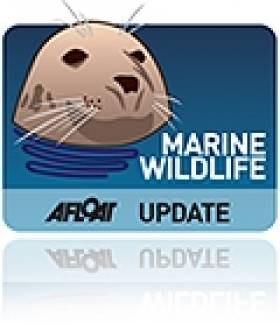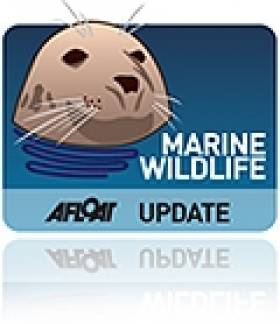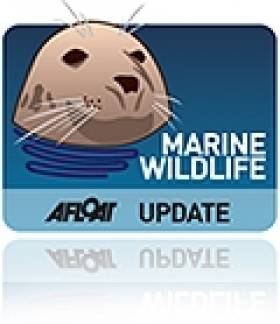Displaying items by tag: marine wildlife
Celtic Mist Will Track Elusive Blue Whale
The infamous Celtic Mist is set to be used to track one of the most elusive marine animals in Irish waters.
The Irish Examiner reports that one of the first duties of the yacht under its new ownership by the Irish Whale and Dolphin Group (IWDG) will be to track down the blue whale, the last of which was spotted off the Irish coast in 2009.
"We’ve made two sightings of the blue whale on the shelf edge but with the Celtic Mist we will be able to go out there for a few weeks and sit there and wait for them," said the IWDG's Dr Simon Berrow.
"Hopefully we will find some more when we bring the Celtic Mist out there. They are very rare."
The blue whale is regarded as the largest animal to have ever lived on earth. They also have an average lifespan of well over 100 years.
As previously reported by Afloat.ie, Celtic Mist was gifted by the Haughey family to the IWDG earlier this year to assist in its marine conservation work.
The yacht competed in a leg of the 2011 Tall Ships Race from Waterford to Scotland before moving to its new home in Co Clare, where it will be refitted for its new life as a research vessel.
Proposals Unveiled for Marine Conservation Zones in England and Wales
Proposals to create more than 100 conservation zones to protect marine wildlife and plantlife in England and Wales have been unveiled.
BBC News reports that the proposals - covering waters around the English and Welsh coastlines, including parts of the Irish Sea - will be assessed by a panel of experts before a final decision by the British government, expected some time in 2012.
The Marine Conservation Zones (MCZs) will have differing levels of protection, depending on what regulators choose to prohibit and when under the provisions of the 2009 UK Marine Bill. This is to allow flexibility for activities such as fishing and recreation.
Should all proposals be approved, it would place more than a quarter of all English waters under some form of protection.
It is also hoped that this is the first step towards a network of protected waters across the whole of the UK.
Proposals for protection zones in Scotland are expected to come forward next year. Meanwhile, the Northern Ireland legisative assembly has yet to pass its own marine protection laws.
BBC News has more on the story HERE.
Welsh Keep a Look Out for Leatherback Turtles
Beachgoers in Wales have been urged to watch out for leatherback turtles who have come to the Irish Sea attracted by the rising numbers of jellyfish.
There have already been a dozen sightings of the endangered marine creatures off the UK coast this year, according to the Marine Conservation Society.
“There are so many jellyfish this year, with lots and lots of reports, particularly in the Irish Sea – it’s turtle heaven, there’s so much food for them,” said MSC biodiversity programme manager Dr Peter Richardson.
The society is hoping to identify any hotspots where they can run protective measures.
The leatherback turtle can grow up to 3m long as weigh as much as a tonne. They are often mistaken for floating logs, said Dr Richardson, but "once you see their large reptilian head, massive flippers and ridged leathery shell you can’t mistake them for anything else".
The Western Mail has more on the story HERE.
'Ireland's Hidden Depths' Uncovered in New Book
The wealth of marine wildlife inhabiting the shallow waters around the Irish coast is highlighted in a new book.
Ireland's Hidden Depths, published by Sherkin Island Marine Station, features photography by Paul Kay, who has studied the marine wildlife of West Cork for almost 30 years.
The book features more than 200 of his photographs, illustrating "a wealth of massively diverse and amazing marine life, glorious kelp forests and spectaucular underwater scenery."
Matt Murphy, director of Sherkin Island Marine Station, said that he hopes the book will give readers "a new perspective on the sea and encourage a sustained interest in its wonder and potential".
The Southern Star has more on the story HERE.
Up Close and Personal: New Boat Tours of Dublin Port
In addition to cruising this stretch of the River Liffey alongside the 'Docklands' quarter, the tour RIB boat will pass downriver through the East-Link toll bridge where visitors will get closer views of the variety of vessels and calling cruise liners from other ports throughout the world.
There will be five daily tours beginning at 10.00am, 12.00pm, 2.00pm, 4.00pm and 6.00pm.Tickets cost €15.00 for adults, €12.50 for students and the charge for senior citizens and children is €10.00.
In addition Sea Safari operate a 'River Liffey' only tour, a Dublin Bay 'North' and 'South' tours which visit Howth Head, Baily Lighthouse, Ireland's Eye and to Dalkey Island and Killiney Bay, where both bay tours provide a chance to spot local marine wildlife of seals, porpoises and sea birds.
- Rib
- Dublin Port
- Dublin Docklands
- Howth Head
- marine wildlife
- Cruise Liners
- Sea Safari Tours
- Dalkey Island
- Port of Dublin
- River Liffey
- Ports and Shipping News
- EastLink
- EastLink Toll Bridge
- Dublin Port news
- Baily Lighthouse
- Killiney Bay
- Seabirds
- Port of Dublin news
- RIBcraft
- M.V. Cill Airne
- Dublin Port cruise liners
- North Quay Wall Dublin
- Dublin Bay tours
- Ireland's Eye
Basking Sharks Top Recent Marine Sightings
Basking sharks have dominated recent sightings of large marine wildlife, according to the Irish Whale and Dolphin Group (IWDG).
The largest shark species in Irish waters accounted for a whopping 43% of sightings submitted to the IWDG's ISCOPE database between 22 April and 1 May.
Other marine species spotted include minke whales (14%), bottlenose dolphins (10%) and sperm whales (2.5%).
April's unseasonably warm weather and calmer seas brought more people out to the water, which may account for this rise in figures.
Ireland's Wildlife has more on the story HERE.
North Bull Island Springs to Life
Cork Harbour Dolphins Jumping
Pictures of Dolphins jumping off Roches Point in Cork harbour have been captured for youtube viewers courtesy of a Cork fishing trip this week. The three harbour dolphins jump clean out of the water in the clip below from about 2:20 on the timeline. A Lovely marine animal sight on a summers evening!
Whale Sighting confirmed off Rathlin
The Irish Whale and Dolphin Group believes that the whale spotted off Howth and Dublin Bay last week may be the same marine animal spotted at the foot of cliffs on Rathlin Island. The whale is thought to be moving down the Irish Sea, a rare behaviour for a humpback. Pictures of the sighting have allowed the IWDG identify it as a humpback, but they are waiting for higher-resolution images to match it with its counterpart in Howth.
The whale was spotted off Rathlin on July 11, three days before it surfaced near Dublin. The IWDG has said: "This is an extremely important sighting as it is only the second validated sighting of this species in N. Irish waters.
"In fact, as the previous sighting was closer to Colonsay, Islay, Scotland, we could easily argue that this is in fact the 1st record of a humpback whale in N. Irish waters."
Whales can cover more than 50 miles a day and migrate more than 5,000 miles in a year.
More info on the current crop of sightings can be found on the IWDG website, HERE.
Anyone spotting a whale is required by law to give them at least 100 metres room and travel parallel to their track, unless you want to end up like an unlucky pair of South African sailors, dismasted by a breaching Right Whale off Cape Town this week.
Since the first report of the Humpback whale off Howth, north Co Dublin, on Thursday, the first sighting in the area in almost 20 years, several other eyewitness reports are surfacing too. The sitings are among a handful of validated recordings of the species in Irish waters over the past century.
A 10-year-old boy who was taking part in a Howth YC sailing course was afloat when the mammal surfaced on Thursday afternoon. The whale swam between the rescue boat and the young sailor as he waited to be picked up by an instructor.
Earleir this week Skerries Sailing Club spotted the humpback on Wednesday evening when preparing for its evening race.. "The whale was just astern of the committee boat which was anchored, said one official.
"The whale remained in close proximity to the boat for about 20-30 minutes and came to within touching distance of the boat," he added.
The mammal has been photographed within metres of the Cardinal marker off Howth Head, between Ireland's Eye and Howth harbour.
The photographer, Seán Pierce of Shearwater Sea Kayaking told reporters: "It stayed around Cardinal Mark off Howth for over two hours . . . lolling about pushing [its] head into trailing weed and perhaps scratching itself." he told the Irish Times.
The mammal has a preference for shallow coastal waters.



























